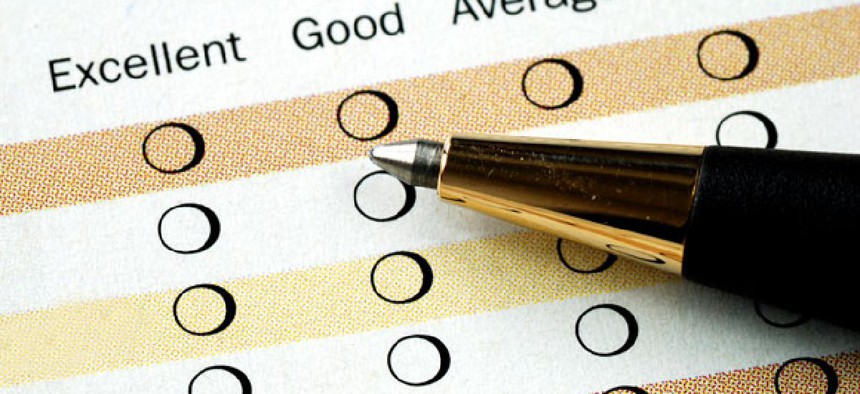
JohnKwan/Shutterstock.com
Feds are less satisfied with their pay, survey finds
FDIC surpasses Nuclear Regulatory Commission in annual Best Places to Work survey.
Federal workers were less satisfied with their pay in 2011 than in 2010, according to the Partnership for Public Service’s annual Best Places to Work survey released Tuesday.
The nonprofit concluded that the dip in employee satisfaction with pay, down 6.1 percent from its 2010 survey to 59.1 points out of 100, is “likely reflecting the two-year freeze on comparability pay increase imposed by Congress in December 2010, and the concern that additional cutbacks might be in the offing.”
The Partnership based its analysis on data from a 2011 Office of Personnel Management survey. The governmentwide survey found that pay ranked third after commitment of an agency’s senior leaders and the belief that employees’ skill sets were suited to their agency’s mission in driving overall job satisfaction.
“Federal employees weigh the totality of their job experience, and if they admire the agency leaders, get along with their supervisor and feel their talents are being used well toward a compelling mission, they may remain engaged and motivated even if they are dissatisfied with pay,” the Partnership said in a statement.
The Federal Deposit Insurance Corporation was ranked the best place to work in this year’s survey, and it also had the highest pay satisfaction. It scored nine points higher than the Nuclear Regulatory Commission, which came in second place after being ranked first the past three years. The partnership noted FDIC was not affected by the federal pay freeze and is able to offer higher pay.
The Transportation Security Administration’s results were “most troubling,” according to the report, registering the lowest score of any agency included in the Best Places to Work rankings. Only 35.8 percent of TSA employees were satisfied with their pay.
At the Labor Department, the survey found additional “potential red flags for management,” noting pay was a “key driver” for the Mine Safety and Health Administration, the Employee Benefits Security Administration, and the Occupational Safety and Health Administration; satisfaction with pay dropped at all those subcomponents of Labor by more than 15 percent.
The Partnership’s study also found that the gap between pay for men and women in the federal workforce was smaller than for the workforce in general. According to the survey’s results, there was no gap in how men and women in the federal workforce viewed the issue of pay, and only a “negligible gap” between older and younger employees.
White employees, however, tended to be more satisfied with their salaries than minority groups, including black, Asian, American Indian and multiracial workers.
An unrelated survey of Senior Executive Service members released Friday found declining satisfaction with pay among top feds as well.
(Image via JohnKwan/Shutterstock.com)






